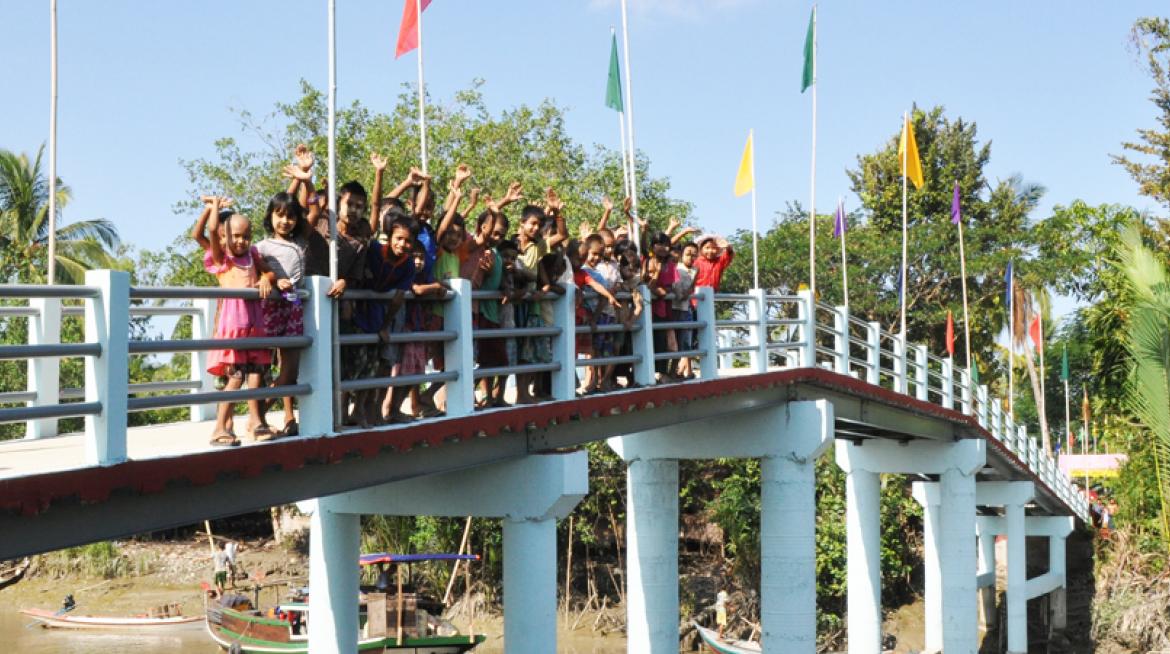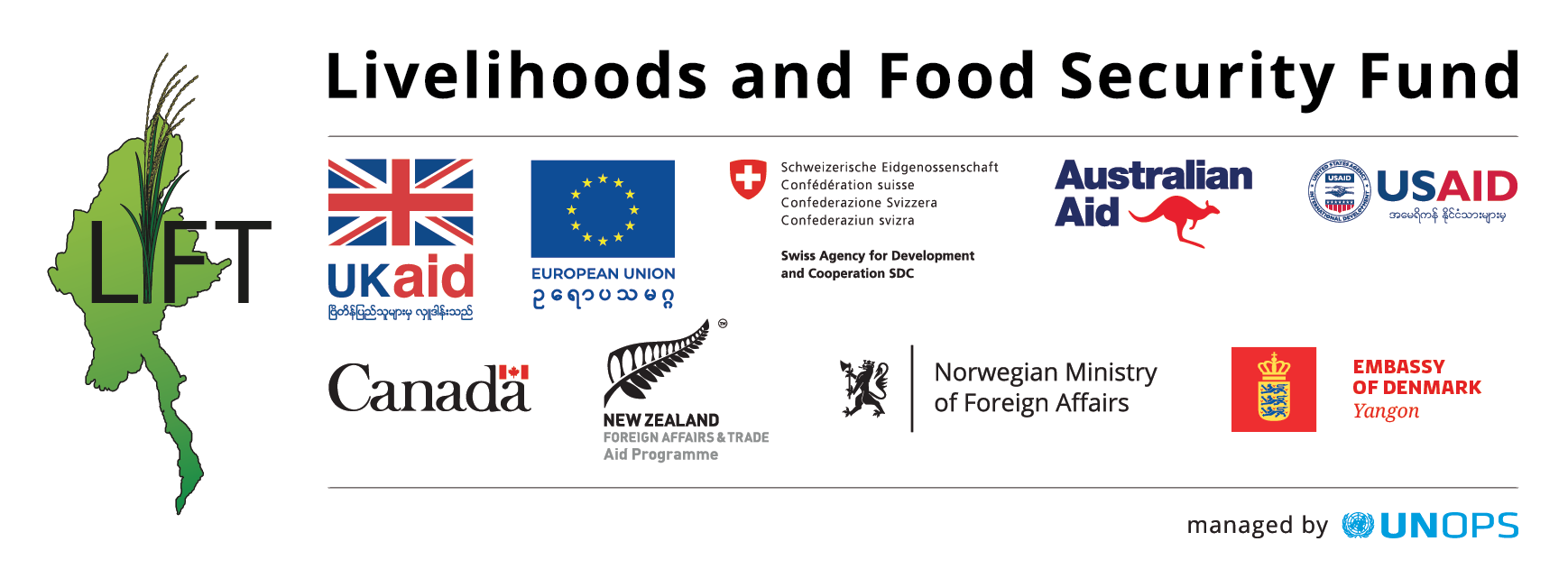
Sounds of traditional music are in the air as a 10-year-old dream turns to reality for communities in Bogale Township. The villagers of Kun Thee Chaung Village in Bogale Township are celebrating the successful opening of a concrete bridge, connecting east and west sides of the village. The 150-foot long bridge now connects thousands of people and improves their access to education, health and livelihood opportunities.
Before the bridge, boats were the main form of transport for people to visit other parts of the village. Only a few small connecting streets were accessible by motorbike.
“We live at the eastern side of this stream. In the past, we had so much trouble for transport, especially for school children. School is located at the other side and not many people own the boats. So every day we had to ask for boat owners to send our school children to the other side and back and forth. Sometimes, children missed their school as there were no boats available in time,” said Daw Khin Than Oo, a mother of school children living in the village.
Bogale is one of the townships hit hardest by Cycone Nargis in 2008. The geographically-vulnerable area of Kun Thee Chaung Village in Bogale saw more than 600 people lose their lives in Cyclone Naris - almost half of the village’s population. During the cyclone, Kun Thee Chaung Village had only a fragile bamboo village connecting the east and west parts of the village. More than 600 people, around half the village’s population died during Nargis. Many deaths occurred as people tried to cross the stream to reach higher ground.
“We only had one bamboo bridge. That was destroyed by strong wind when Nargis struck. So people tried to cross the stream by boats to reach the higher land of the other side, but they were swept out to the stream by storm surge. Many people died just on the way,” Daw Mya, 72 years, said as she sadly recalled the Cyclone Nargis experience.
Since then, the villagers of Kun Thee Chaung have been trying to build a strong concrete bridge without success due to insufficient funds. A majority of households in the village were smallhoder farmers and casual labourers and could not afford to contribute much money to rebuild a bridge. So, a few medium-scale farmers contributed money and built a bamboo bridge. But the bridge was fragile and needed significant repairs at least two times a year.
“We had to cross the cracked, dangerously shaky bridge to reach the monastery. We could not go to the monastery as often as we wished,”Daw Mya said. Taking a weekly Sabbath at the monastery is usual practice for old-aged people like Daw Mya in the village. The village also did not have any village-based health staff. Only a retired health worker was caring for villagers with health problems and his disability meant that patients had to reach him when they were ill, making it difficult for elderly and parents with young infants to reach health care in emergencies.
When the Growing Livelihoods in Bogale project started, Kun Thee Chaung Village was selected as an intervention area because of its high-risk to natural disasters and the need to improve local livelihoods. The project is funded by LIFT and implemented by World Vision. It was identified early in the project that a strong bridge was needed to reduce the vulnerability of communities living in the area and contribute to the area’s economic development.
“Communities knew what they needed the most in their village development. They asked for support to build the bridge and the local government’s cooperation was also great,” Project Manager U Htay Lin said.
From the Members of Parliament’s township budget, the Bogale General Administration Department (GAD) allocated MMK 4 million to bridge construction. Kun Thee Chaung villagers contributed around MMK 7 million and their labour to build the bridge. The remaining costs of MMK 10 million was covered by the project.
“This bridge is evidence of strong collaboration between us – local communities, government and the project. Our government prioritised the rural development particularly the improvement of rural infrastructure; but we could not cope to satisfy all the basic needs in each and every village yet. We thank the LIFT donors for their support in filling the gap and we really appreciate it,” U Kyaw Zaw Aung, Village Tract Administrator said.
The Growing Livelihoods in Bogale project aims to achieve improved livelihoods of marginal farmers and landless people by providing vocational training, creating income generation activities for women, supporting livestock breeding, establishing village savings and loans association, providing disaster risk reduction (DRR) training, strengthening the capacity of community-based organisations, improving nutritional status of children under five years old and supporting home gardening activities. In cooperation with the government-led disaster management committees, the DRR training and simulation exercises were also conducted with the participation of the whole village to help communities improve their ability to cope with the stress and shocks of climate change issues like cyclones and floods.
Kun Thee Chaung villlagers in a disaster risk reduction simulation exercise
“We were never aware of the early warning messages before. After Nargis, the NGOs came here and talked about the disaster preparedness. We now listen to the radio regularly. We know what the levels of the early warning system are. For example we should be ready with our packages at the EWS yellow level and get to the strong shelter at red level. If we had this bridge before Nargis, we would have saved many people’s lives. Now even little kids can cross the bridge safely. Having this bridge, I feel so much relief for our children and old-aged people. We all can smile now and feel confident to overcome the difficulties if any storm comes in future,” Daw Khin Than Oo said.







